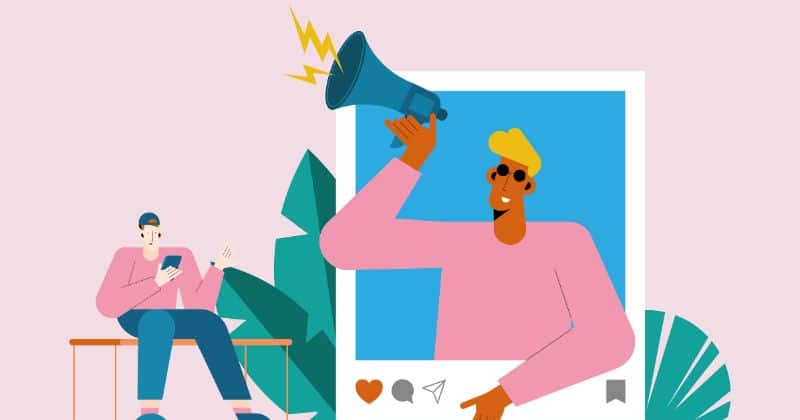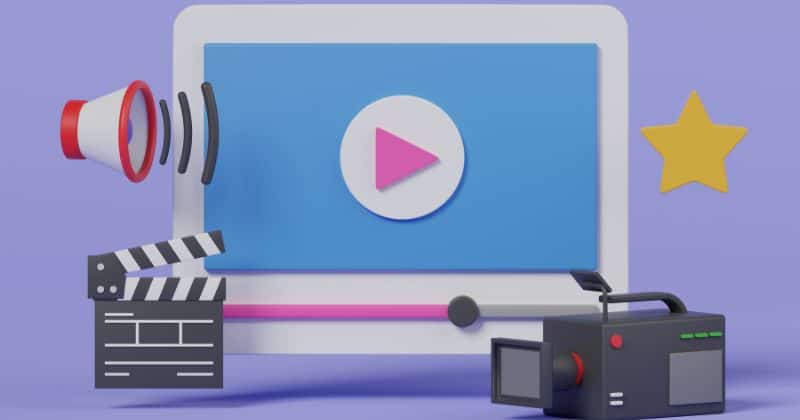You’re likely here because you’re facing the age-old challenge: how to get blog readership. Think of it as building a community around your content. The goal is to turn your one-time visitors into loyal followers.
Let’s cut to the chase. Gaining readership isn’t easy. From guest blogging to mastering SEO for organic traffic, the hurdles are real. But here’s the good news—I’ve been through this. I’m a digital marketer and a seasoned blogger who’s tackled these issues head-on. Stick around because we will break down actionable steps to overcome these challenges.
Why should you listen up? Understanding how to grow your blog’s community is crucial for anyone serious about monetizing their blog or establishing influence. You’ll boost your credibility and set the stage for potential partnerships and revenue streams. So, are you ready to transform your blogging efforts into something impactful? Let’s get started.
Understanding Reader Preferences and Crafting Irresistible Headlines

Crafting compelling headlines is crucial for attracting readers to your blog. Understanding reader preferences and implementing effective headline strategies can significantly increase your blog’s readership.
Conducting Audience Research to Understand Reader Preferences
To create engaging headlines, it’s essential to conduct thorough audience research. By understanding your target audience’s interests, needs, and pain points, you can tailor your headlines to resonate with them.
Start by creating reader personas based on demographic information such as age, gender, location, and occupation. Then go deeper into their motivations and challenges related to the topics you cover in your blog.
Analyzing Popular Headlines in Your Niche for Inspiration
Analyzing popular headlines in your niche can provide valuable insights into what resonates with readers. Take note of the structure, tone, and language used in these headlines.
Look for patterns or common themes that consistently attract attention or generate engagement. While it’s important not to copy directly from others, drawing inspiration from successful headlines can guide you in crafting equally captivating ones.
Utilizing Emotional Triggers to Create Compelling Headlines
Emotions play a significant role in capturing readers’ attention. By incorporating emotional triggers into your headlines, you can evoke curiosity or tap into specific desires or fears of your target audience.
Consider using power words that elicit emotions such as “discover,” “unveil,” “transform,” or “conquer.” Appealing to readers’ aspirations or addressing their pain points can make your headlines more compelling.
Incorporating Keywords Strategically into Your Headlines
Keywords are vital for search engine optimization (SEO) and improving visibility on search engine result pages (SERPs). However, it’s crucial to incorporate keywords naturally without compromising readability or clickability.
Aim to include relevant keywords in your headlines, preferably towards the beginning. This helps search engines understand the topic of your blog post and increases the likelihood of attracting organic traffic.
A/B Testing Different Headline Variations for Optimal Engagement
A/B testing is a valuable technique for determining which headline variations resonate best with your audience. Create multiple versions of your headline and test them against each other to identify the most effective one.
Monitor website metrics such as click-through rates (CTR), time spent on page, and social media shares to gauge engagement levels of reader personas. Continuously experimenting and analyzing data can refine your headline strategy over time.
When crafting compelling headlines, it’s important to remember that they are just the first step in capturing readers’ attention. Once visitors land on your website, providing a seamless user experience that keeps them engaged is crucial. This means understanding your reader’s personas and tailoring your content to their needs.
Utilizing Your Email Signature for Blog Promotion

Your email signature can be a powerful tool to promote your blog and attract more readers to your website. By strategically utilizing your email signature, you can drive traffic to your latest blog posts, encourage people to subscribe to your blog, and even promote upcoming content or special offers.
Here are some effective ways to make the most of your email signature for blog promotion:
Adding a link to your latest blog post in your email signature
Including a direct link to your latest blog post in your email signature is a simple yet effective way to promote it. This allows every email you send to be an opportunity for website readership growth.
Ensure the link is prominently displayed and easily clickable so that recipients can access the content with just one click.
Encouraging recipients to subscribe to your blog via email signature
One of the keys to building a loyal readership is having a strong base of email subscribers. By including a call-to-action in your email signature, you can invite recipients to join your mailing list and stay updated with all the new content you publish on your blog.
Consider using phrases like “Subscribe now” or “Join our community,” along with a link directing them to an opt-in landing page.
Promoting upcoming content or special offers through email signatures
Your email signature provides an excellent space for promoting upcoming content or any special offers you may have.
Use this opportunity wisely, whether it’s an exclusive sneak peek of an upcoming blog post or a limited-time discount on products/services related to your niche. Craft compelling copy that piques curiosity and motivates recipients to take action.
Customizing email signatures with eye-catching visuals or banners related to your blog
Visual elements can significantly enhance the effectiveness of your email signature in grabbing attention and driving engagement. Consider adding eye-catching visuals or banners that align with the branding of your blog.
This could include images of topics you frequently cover, your blog logo, or a visually appealing banner showcasing your latest blog post.
Tracking click-through rates from email signature links using analytics tools
To gauge the effectiveness of your email signature in driving traffic to your blog, tracking the click-through rates of the links included is essential.
Utilize analytics tools like Google Analytics or Bitly to monitor the performance of these links. This data will provide valuable insights into which types of content resonate most with your audience and allow you to refine your promotional strategies accordingly.
Maximizing Social Media for Content Promotion

To maximize your blog readership, it’s crucial to leverage the power of social media. You can effectively utilize various social media platforms to reach a wider audience and drive more traffic to your blog. Here are some key strategies to consider:
Identifying the Most Active Social Media Platforms
Start by identifying the social media platforms where your target audience is most active. This will allow you to focus on channels with the highest engagement and visibility potential.
Research or analyze data to determine which platforms align with your niche and demographics.
Creating Engaging and Shareable Posts
Once you’ve identified the right social media platforms, creating engaging and shareable posts that promote your blog content is important.
Craft compelling captions or headlines that captivate your audience’s attention and entice them to click through to read your blog post. Use eye-catching visuals, such as images or videos, that are relevant to your content.
Leveraging Relevant Hashtags
Hashtags play a significant role in increasing the visibility of your social media posts. Research and use hashtags relevant to your niche, ensuring they are popular enough to generate traction but not overly saturated.
Incorporating well-chosen hashtags into your posts can help expand their reach beyond your followers.
Engaging with Your Audience
Social media is all about fostering connections and engaging with others. Take the time to respond to comments on your posts, answer questions, and thank people for sharing or liking your content.
Actively participating in conversations around your blog posts helps build relationships with followers and encourages them to continue supporting your work.
Collaborating with Influencers or Bloggers
- Collaborating with influencers or other bloggers with a strong presence on social media can significantly boost the promotion of your blog content.
- Partnering with influencers allows you access to their established audience base, exposing more people to your blog.
- Consider guest posting on their platforms, hosting joint giveaways, or participating in social media campaigns together.
Engaging with Online Communities for Blog Promotion

To increase your blog readership, engaging with online communities relevant to your niche is important. By actively participating in forums, groups, or subreddits related to your topic, you can establish yourself as an authority and attract potential readers.
Here are some effective strategies for engaging with online communities to promote your blog:
Join Relevant Online Communities
Start by identifying the online communities where your target audience is active. Look for forums, groups, or subreddits focusing on topics related to your blog’s niche. Joining these communities will allow you to connect with like-minded individuals interested in the same subjects as you.
Share Valuable Insights and Contribute Helpful Information
Once you’ve joined these online communities, participate by actively sharing valuable insights and contributing helpful information.
Be generous with your knowledge and expertise. By providing valuable content within these communities, you’ll establish yourself as a trusted source of information and gain credibility among fellow members.
Include Links Back to Relevant Blog Posts
When appropriate, include links back to relevant blog posts in your contributions within the online communities.
However, it’s crucial not to spam or overly self-promote. Instead, focus on offering genuine value through your content and only include links when they genuinely add value to the discussion or provide additional resources for community members.
Build Relationships by Being Active and Supportive
Building relationships within online communities is key to expanding your blog readership. Be active by regularly engaging with other members’ posts and discussions.
Offer support, answer questions, and provide guidance whenever possible. This will help you establish a positive reputation within the community and encourage others to visit your blog.
Avoid Self-Promotion Without Providing Value
Engaging with online communities is a strategic way to promote your blog and boost readership. However, it’s essential to approach this with a mindset focused on providing value to the community. Before sharing your blog, consider how you can contribute meaningfully to discussions and forums.
You create a natural pathway for readers to discover your blog by consistently offering helpful insights and engaging in relevant conversations. This approach ensures that your promotional efforts are both genuine and welcomed.
Effective Community Engagement
- Join forums, groups, or subreddits related to your blog’s niche.
- Share insights and contribute to discussions, adding value before self-promotion.
- Include links to your blog posts when they can genuinely help answer a question or solve a problem.
- Build relationships with community members to foster a genuine connection.
Remember, avoiding overt self-promotion is key. Focus first on how you can help others. Through thoughtful engagement, you not only increase your blog’s reach but also build a reputation as a valuable community member.
Implementing these strategies can significantly expand your reach and attract organic traffic to your blog, turning community engagement into a powerful tool for growth.
Enhancing Blog Articles with Social Media and Videos

It’s important to leverage the power of social media and video content to boost your blog readership. Incorporating these elements into your blog articles can enhance engagement and attract a wider audience. Here are some effective strategies to consider:
Embedding social media posts within your blog articles to increase engagement
One way to make your blog posts more interactive is by embedding social media posts directly within them. This allows readers to engage with the content in real time, whether it’s through comments, likes, or shares.
For example, you can embed a tweet related to your article’s topic or include an Instagram post showcasing relevant visuals. Doing so provides additional context and encourages readers to participate in the conversation.
Creating video content related to your blog posts and embedding them in articles
Video content has become increasingly popular in recent years, offering a dynamic way to engage with your audience. Consider creating videos that complement your blog posts and embed them directly within the articles.
These videos can provide additional insights, visual demonstrations, or even interviews with experts on the topic. By incorporating videos into your blog articles, you cater to different learning styles and capture the attention of those who prefer visual content.
Encouraging readers to share your content on their own social media platforms
Social sharing plays a crucial role in expanding the reach of your blog posts. Make it easy for readers to share your content by including social sharing buttons throughout your articles.
This lets users quickly post links or snippets of your article on their preferred social media platforms, such as Facebook, Twitter, LinkedIn, or Pinterest. Encourage readers explicitly at the end of each article by asking them to share if they found it valuable.
Utilizing visually appealing images or infographics throughout your blog posts
Visuals are an essential component of any engaging blog post. Incorporate visually appealing images or infographics that complement your written content. These visuals break up the text, make it more digestible, and help convey information more engagingly.
For instance, if you’re writing a recipe blog post, include high-quality images of the final dish or a step-by-step infographic to guide readers through the cooking process.
Optimizing Videos for SEO
Optimizing video content for search engine optimization (SEO) is crucial when incorporating videos into your blog articles. This means using relevant keywords in your video titles, descriptions, and tags to boost visibility in search results related to your topics.
Key Strategies for Video SEO
- Incorporate relevant keywords into video titles, descriptions, and tags.
- Consider transcribing videos and embedding the transcripts within articles for improved accessibility and additional SEO benefits.
Embedding social media posts and videos directly into your articles can enhance reader engagement and help expand your readership. Complement your content with visually appealing images, infographics, and optimized videos to create an immersive experience for your audience.
Consistency in Content Creation
Consistency is vital. Regularly publish and promote new content across various platforms to build and maintain an engaged readership base. Encouraging social sharing can also amplify your reach and attract more visitors to your blog.
Building Online Groups and Continuing Education for Blog Success

Creating an online group or community centered around your blog’s niche is essential to boost your blog readership.
This will provide a platform for like-minded individuals to connect and offer valuable resources, discussions, and support within the group.
Building a Niche Community for Your Blog
Engaging your audience effectively involves creating an online group or community centered around your blog’s niche. Utilize platforms like Facebook groups, forums, or dedicated websites to gather individuals with shared interests, fostering a space for interaction and engagement.
Enhancing Group Value with Resources and Support
- Provide valuable resources such as articles, tutorials, and infographics.
- Initiate and encourage discussions with thought-provoking questions to build engagement.
- Offer support by responding to queries and concerns, establishing your reliability.
Interactive Learning through Webinars and Live Sessions
Host webinars or live sessions to delve into topics related to your niche, offering real-time interaction with your audience. Regular interactive sessions position you as an authority and enhance the community experience.
Collaborating for Expanded Reach
Expand your blog’s visibility by collaborating with other experts in your field. Invite guest contributors or interview industry leaders, tapping into their audience and providing fresh perspectives to your readers.
Exclusive Offers for Community Members
Incentivize membership by offering exclusive content or discounts to your online group members. This strategy not only adds value but also fosters a stronger community bond.
SEO Tips and Plugins for Bloggers

Optimizing your website for search engines is essential to increase your blog readership. This can be achieved through effective SEO strategies and plugins designed to improve your site’s visibility. Here are some valuable tips and plugin recommendations that will help you attract more readers to your blog.
Conducting Keyword Research
Conducting keyword research is one of the first steps in optimizing your blog for search engines. This involves identifying high-ranking search terms in your niche that can drive organic traffic to your site.
Using tools like Google Analytics or free keyword research tools, you can discover relevant keywords and phrases people are searching for.
Optimizing Meta Tags, Headers, and URLs
Once you’ve identified the right keywords, it’s important to incorporate them into key areas of your blog posts. This includes optimizing meta tags (such as meta titles and descriptions), headers (H1, H2, etc.), and URLs.
By including relevant keywords in these elements, you increase the chances of search engines recognizing the relevance of your content.
Installing SEO Plugins
To make the process easier, several SEO plugins can assist you in optimizing your blog effectively. Two popular options are Yoast SEO and All in One SEO Pack. These plugins provide step-by-step instructions on optimizing each blog post by analyzing content readability, keyword usage, meta tags, and more.
Pros:
- User-friendly interfaces make optimization accessible even for beginners.
- Provides real-time feedback on keyword usage and readability.
- Offers XML sitemap generation for better indexing by search engines.
Cons:
- Some features may require a premium version.
- Overreliance on plugins may lead to neglecting other crucial aspects of SEO.
Monitoring Website Speed and Mobile-Friendliness
Search engines prioritize websites that offer a good user experience, which includes fast loading times and mobile-friendliness. Slow-loading websites can discourage readers and negatively impact your search rankings. To improve website speed, consider optimizing images, using caching plugins, and choosing a reliable hosting provider.
Ensuring that your blog is mobile-friendly is crucial in today’s digital landscape. Many users access the internet through their smartphones or tablets, so it’s essential to have a responsive design that adapts seamlessly to different screen sizes.
Building Quality Backlinks
Backlinks are an important factor in determining the authority of your blog. They act as votes of confidence from other websites, indicating to search engines that your content is valuable and trustworthy. Building quality backlinks can be achieved through guest posting on reputable sites within your niche or collaborating with influencers or industry experts.
Pros:
- Increases visibility and credibility for your blog.
- Drives referral traffic from other established websites.
- Helps improve search engine rankings over time.
Cons:
- Requires time and effort to build relationships with other bloggers or influencers.
- Low-quality backlinks may harm your site’s reputation.
By implementing these SEO tips and utilizing the recommended plugins, you can enhance your blog’s visibility in search engine results pages (SERPs). Remember to focus on providing valuable content that caters to the needs of your target audience while incorporating relevant keywords strategically.
Over to You
In wrapping up how to get blog readership, we’ve seen that catchy headlines and knowing what your readers like are key. Using your email signature and social media are little helpers to get you more readers. So why not start there?
A blog with videos and social stuff keeps people around longer. And don’t forget, SEO makes you easier to find. You’ve got the tools, now’s the time to use them and grow those reader numbers.
FAQs
How do you grow readership of a blog?
To grow blog readership, employ a multi-faceted approach that combines quality content creation, search engine optimization (SEO), and targeted promotion. Consistent posting schedules, audience engagement through social media, and leveraging email marketing are also pivotal. Data analytics can further refine strategies by highlighting user behavior and preferences.
How do bloggers get an audience?
Bloggers attract an audience through high-quality, relevant content and effective marketing strategies. These include search engine optimization (SEO) for organic reach, social media promotion for immediate engagement, and email marketing for retention. Consistency and audience targeting are key elements.
What is a good blog readership?
A “good” blog readership varies based on goals and niche, but some general indicators include high levels of user engagement, consistent traffic growth, and a strong returning visitor ratio. Achieving thousands of unique monthly visitors is often considered a significant milestone.
How to get 100,000 readers for your blog?
Reaching 100,000 blog readers requires a strategic approach combining high-quality content, robust SEO practices, and effective marketing. Key tactics include keyword research, regular content updates, social media promotion, and email marketing. Analytics tools are essential for tracking performance and refining strategies.
How long does it take to see an increase in blog readership?
The time required to see an increase in blog readership varies but typically ranges from 3 to 6 months when implementing consistent, high-quality SEO strategies. Factors influencing this timeline include content quality, update frequency, and the niche’s competitive landscape.
Should I focus more on social media or SEO to increase my blog’s readership?
Both social media and SEO are pivotal but serve different purposes. Social media offers immediate engagement and is excellent for content promotion, while SEO ensures long-term visibility and organic traffic. For sustainable growth, a balanced approach integrating both strategies is advisable.
Is it necessary to have a specific niche for my blog?
A specific niche for your blog is not mandatory but is often advantageous. A focused niche allows for targeted content, easier audience segmentation, and potentially higher search engine rankings. However, it may limit the range of topics you can cover.



